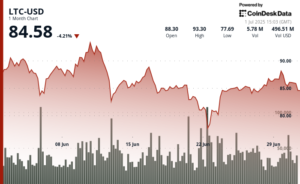Rising Geopolitical Tensions and Their Impact on Global Oil Markets
Recent U.S. airstrikes targeting three major nuclear facilities in Iran—Fordow, Isfahan, and Natanz—have escalated geopolitical tensions in the Middle East and triggered significant alarm across global oil markets. Announced by President Donald Trump, this military action has raised concerns over the potential closure of the strategically crucial Strait of Hormuz. This narrow passage serves as a vital gateway between the Persian Gulf and the Gulf of Oman, with around 20% of the world’s oil supply flowing through it. As markets react to the potential fallout, the implications for oil prices and global economic stability are becoming increasingly pressing.
The Significance of the Strait of Hormuz
The Strait of Hormuz has long been a focal point of geopolitical significance, primarily because of its role as a key shipping route for oil. Given that any disruptions to this passage could lead to rampant price increases—potentially pushing crude oil prices to between $120 and $130 per barrel—global economic stability hangs in the balance. Such an increase in oil prices would not only affect energy costs but would also carry downstream effects, as higher oil prices would lead to increased prices for everyday goods, thereby stoking inflation levels worldwide.
Current Market Reactions
Despite the U.S. military actions and concerns over escalated conflicts in the region, the global benchmark for crude oil, Brent crude, surprisingly remains stable at around $72 per barrel. This relative stability illustrates the caution investors are exercising as they await a clearer understanding of Iran’s potential retaliation and the ongoing security situation in the Strait of Hormuz. Market dynamics remain precarious, and the oil industry is bracing itself for potential shocks, dependant on how events unfold.
The Role of Bitcoin as a Safe-Haven Asset
In contrast to traditional markets, Bitcoin has emerged as a noteworthy contender in this turbulent environment, exhibiting resilience even amidst geopolitical upheaval. Currently trading above $102,600, Bitcoin’s stability has fueled perceptions that it is evolving beyond a speculative asset, being acknowledged instead as a potential safe-haven choice during times of uncertainty. Its fixed supply and decentralized nature, coupled with increasing adoption, position Bitcoin as a hedge against inflation and instability—factors that could further entrench its role as a digital store of value.
Bitcoin’s Market Dynamics
The cryptocurrency market operates without the restrictions of conventional trading hours, providing a unique advantage in times of crisis. Recent observations suggest that cryptocurrencies, like Bitcoin, tend to experience sell-offs during weekends as investors pivot to safety. The minimal fluctuation in Bitcoin’s price despite the controversial U.S. airstrikes reflects its growing maturity as an asset class. At the time of writing, Bitcoin retains its status as the leading cryptocurrency by market capitalization, boasting a substantial market cap of $2.04 trillion and a 24-hour trading volume of approximately $48.7 billion.
Broader Crypto Market Outlook
As of June 22, 2025, the entire cryptocurrency market is valued at around $3.14 trillion, with Bitcoin dominance at approximately 65.01%. This data underscores the significance of Bitcoin within the broader crypto landscape, especially during pivotal moments when traditional markets are rattled by geopolitical developments. The endurance of Bitcoin amidst these circumstances suggests a nuanced shift in investor sentiment, wherein cryptocurrencies are increasingly considered reliable alternatives to traditional assets like gold in risk-off scenarios. As the world becomes more interconnected and digital, the role of cryptocurrencies in hedging against instability is likely to gain further importance.
In conclusion, the evolving geopolitical climate, fueled by military actions in the Middle East, presents profound implications for global oil markets and broader financial ecosystems. The stability of oil prices against a backdrop of uncertainty highlights the intricate dynamics at play, while Bitcoin’s resilience signals its maturation as an asset. As the situation develops, both oil and cryptocurrency markets will remain closely watched, suggesting that the future may be shaped by the interplay between traditional energy resources and emerging digital assets.

















